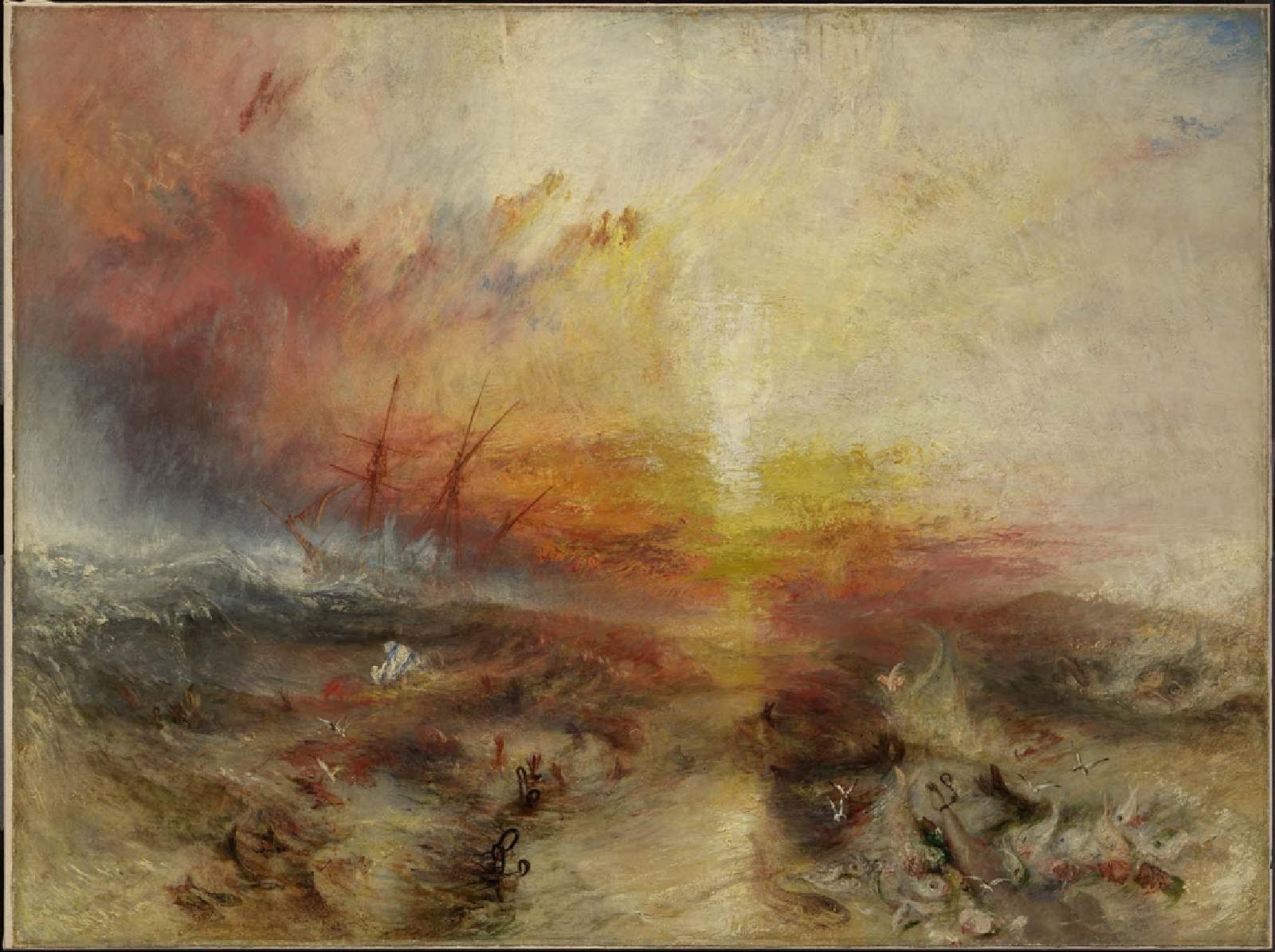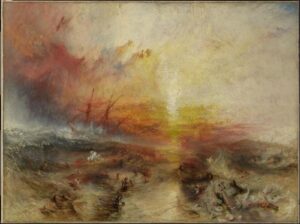
In 1840, the great British romantic painter J. M. W. Turner painted Slavers Throwing overboard the Dead and Dying-Typhon coming on, now commonly called The Slave Ship. In true Turner form, the narrative is matched by the sublimity of the sea.
In aesthetics, the word ‘sublime’ means greatness beyond all possibility of human comprehension. There’s a large dollop of terror in there, as well, for what is mankind when facing the power of the sea or the infinity of space, or, indeed, God? The sublime is a force much greater than beauty. Our primary response ought to be awe.
The archetypal painting of the sublime is Caspar David Friedrich‘s Wanderer above the Sea of Fog. But sublimity was on every Romantic painter’s mind. The British gave it an added fillip of moral judgment; hence Turner used it in his powerful polemic against slavery.
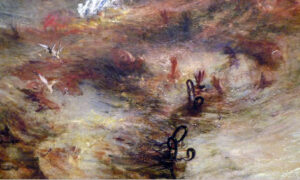
Turner was inspired by the story of the overloaded slave ship Zong. She was carrying 442 enslaved people on a boat intended to carry fewer than half that; she was captained by a surgeon, not a mariner, and nobody was checking the water supplies as she bumbled around the Caribbean. When she ran low on drinking water, the crew threw more than 130 people overboard. They continued on this unspeakably evil task even after it started raining.
Evil is difficult to depict in a landscape painting, so Turner made Nature the visual culprit. The ship in the distance is a slave ship, as evidenced by its fast clipper lines. That’s the most realistic part of the painting. There are iron chains floating on a lurid sea, the leg of a woman being devoured by fishes and drowning hands grasping at the air.
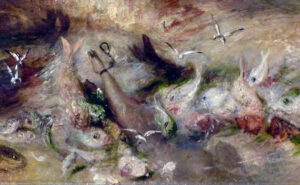
When Turner exhibited this picture at the Royal Academy in 1840, he paired it with the following extract from his perhaps-apocryphal poem Fallacies of Hope. (When he died, no such manuscript was ever found, but he often paired his paintings with verses from this supposed work.)
For The Slave Ship, he wrote:
Aloft all hands, strike the top-masts and belay;
Yon angry setting sun and fierce-edged clouds
Declare the Typhon’s coming.
Before it sweeps your decks, throw overboard
The dead and dying – ne’er heed their chains
Hope, Hope, fallacious Hope!
Where is thy market now?
Although Turner was a staunch Abolitionist in his maturity, as a young man he’d invested in the West Indian sugar trade, like many of his peers. Perhaps The Slave Ship was his atonement.
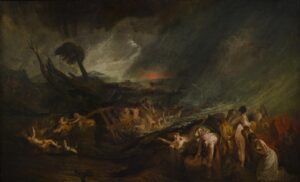
Long before Turner developed his unique style, he was captivated by the concept of the sublime. That can be seen clearly in The Deluge, painted when he was just 30. Nominally about the Biblical flood, it’s a powerful statement of hopelessness, prefiguring the same theme in The Slave Ship.
Reaction to The Slave Ship was mixed. John Ruskin, who received it as a gift from his father in 1844, thought it the greatest of Turner’s paintings. Mark Twain ridiculed it thus, “What a red rag is to a bull, Turner’s ‘Slave Ship’ was to me, before I studied art. Mr. Ruskin is educated in art up to a point where that picture throws him into as mad an ecstasy of pleasure as it used to throw me into one of rage, last year, when I was ignorant. His cultivation enables him-and me, now-to see water in that glaring yellow mud, and natural effects in those lurid explosions of mixed smoke and flame, and crimson sunset glories; it reconciles him-and me, now-to the floating of iron cable-chains and other unfloatable things; it reconciles us to fishes swimming around on top of the mud-I mean the water. The most of the picture is a manifest impossibility-that is to say, a lie; and only rigid cultivation can enable a man to find truth in a lie.”
My 2024 workshops:
- Painting in Paradise: Rockport, ME, July 8-12, 2024.
- Sea & Sky at Schoodic, August 4-9, 2024.
- Find your authentic voice in plein air: Berkshires, August 12-16, 2024.
- Art and Adventure at Sea: Paint Aboard Schooner American Eagle, September 15-19, 2024.
- Immersive In-Person Workshop: Rockport, ME, October 7-11, 2024.

